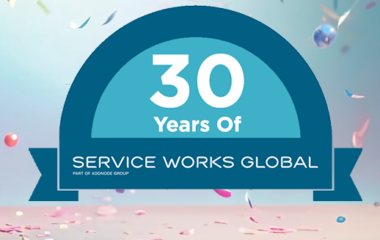As more standards are introduced across building operations, Penny Brinsley, Regional Account Director at SWG, is featured in the March issue of FMJ (p.28-29) to discuss the current trends in compliance and risk assessment, and explains how a permit to work system can offer various benefits, especially when integrated within a CAFM system.
“An ounce of prevention is worth a pound of cure.” Benjamin Franklin said this when discussing fire prevention, and the saying holds true to this day. Of course, we can extend its relevance to numerous compliance and health and safety issues, including critical asset maintenance, dangerous materials and the working environment.
The Health and Safety at Work etc Act 1974 is still the primary piece of legislation regarding compliance, followed by the Management of Health and Safety at Work Regulations 1999. In addition to the obvious need to protect the safety of employees, the penalties for non-compliance can be substantial. The average fine is £150,000 and the highest last year was £10 million. Individuals can also face imprisonment, while the reputational damage can take years to come back from.
Compliance is often approached as a tick box exercise to avoid these penalties, but setting up strong compliance practices offers an opportunity to increase efficiency and reduce costs, on top of the health and safety benefits.
Permit to Work
Ensuring the security, validity and regulatory adherence of a contractor’s permit to work is crucial for maintaining personal health and safety.
Leading CAFM software provides permit management functionality or allows for the seamless integration of existing work permit software, providing a comprehensive end-to- end solution from the initial permit request through approval, publication, and issue to the on-site operative. This integrated approach offers organisations an efficient permit approval and allocation solution, helping to prevent compliance issues and ensuring permit documentation is watertight.
Permit to Work functionality within QFM software streamlines the process of requesting and obtaining work permits. It assists in creating permits by issuing relevant clearance documents to team members and attaching any specific requirements for the job, such as health and safety qualifications or equipment certifications.
Users can tailor the permit approval process to suit the needs of their building, creating as many approval stages as necessary. This process enhances security and accountability, providing a transparent record of who approved each element of the work. The integrated system eliminates the need for a separate platform for managing maintenance on-site, saving valuable time and resources. If your CAFM solution doesn’t have this functionality, integrating a permit to work solution into an existing CAFM platform helps streamline planned maintenance processes and ensure ongoing compliance.
The system ensures that all relevant information is prepared for the necessary work by centralising data when planning maintenance activities. This approach enhances H&S management by providing all team members with a clear understanding of the work, potential risks, and when permits are needed for contractors or operatives involved.
Auditing and Accountability
In order to maintain high standards and monitor safety, it is best practice to carry out auditing after the completion of work. CAFM software with auditing functionality ensures the successful completion of inspections, including quality checks and H&S assessments. This acts as a failsafe as companies can instruct the system to randomly select and check the quality of work carried out, verifying that the correct processes were followed and reported.
It also allows organisations to set benchmarks for operative performance, on-time completion of work, and work quality, so that subpar performance can be addressed. Robust auditing functionality is especially vital in high-risk workplace environments. In a healthcare estate, for example, audits are advisable in each room following maintenance or patient discharge to ensure it meets specific cleanliness standards and is safe for patients and staff use.
Integrating Compiance Into Maintenance
Creating schedules and planning for permits within a workflow is a complex task, particularly when compliance levels need to be met for work to be carried out safely. Integration with maintenance standards, such as SFG20, aids facilities managers in achieving this goal. With a library of over 1,200 template maintenance schedules covering 70 equipment types, SFG20 integration ensures best practice, saving time and effort for facilities managers while promoting organisational compliance.
This integration eliminates the need for additional documentation on how to comply, allowing the creation of customised instructions and maintenance routines while ensuring adherence to industry standards and best practices, including H&S protocols. It pays to stay ahead of the curve when it comes to compliance regulations. Researching and investing in compliance and maintenance software now may well save headaches further down the line as you’ll already be well prepared for any regulatory changes.
Case Study – SWG and Mitie
Mitie manages 32 healthcare estates and schools under public-private partnership contracts, each with unique requirements. One key challenge was working around each facility’s opening hours, which means the software not only needed to manage and allocate the jobs but also intelligently calculate when they could be carried out to cause minimal disruption.
QFM addressed these intricacies by scheduling work at the right times for each contract’s operating hours. The software automatically schedules planned preventative maintenance (PPM) jobs, allocates them to the correct operatives, and allows for the creation of permits for these repeat jobs, saving time and resources while guaranteeing compliant workers and a fully audited chain of events. The PPM jobs are pooled with all reactive tasks and tracked by the QFM help desk module. This makes the system intuitive and easy to use.
Summary
A CAFM solution with permit to work and audit management functionality represents the future of compliance and risk assessment for FM teams. This approach streamlines processes, enhances accountability, and ensures organisations meet and exceed regulatory standards on an ongoing basis.







